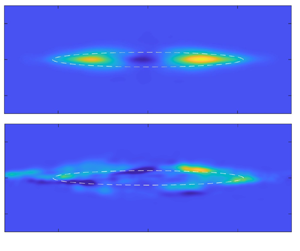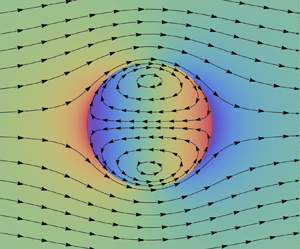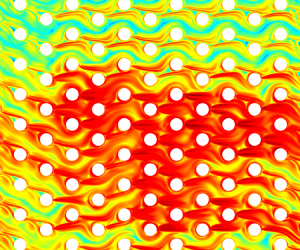Refine listing
Actions for selected content:
1418326 results in Open Access
The “New Woman” in the Periodical Press: Portraying Usefulness at St. Stephen’s Girls’ College in Hong Kong, 1921-1941
-
- Journal:
- History of Education Quarterly / Volume 64 / Issue 1 / February 2024
- Published online by Cambridge University Press:
- 26 January 2024, pp. 43-65
- Print publication:
- February 2024
-
- Article
-
- You have access
- Open access
- HTML
- Export citation
Andrew Stone Higgins. Higher Education for All: Racial Inequality, Cold War Liberalism, and the California Master Plan Chapel Hill: University of North Carolina Press, 2023. 283 pp.
-
- Journal:
- History of Education Quarterly / Volume 64 / Issue 1 / February 2024
- Published online by Cambridge University Press:
- 26 January 2024, pp. 103-105
- Print publication:
- February 2024
-
- Article
- Export citation
Vortex ring breakdown dominating the entrainment of a synthetic jet
-
- Journal:
- Journal of Fluid Mechanics / Volume 980 / 10 February 2024
- Published online by Cambridge University Press:
- 26 January 2024, A5
-
- Article
- Export citation
How adolescents’ lives were disrupted over the course of the COVID-19 pandemic: A longitudinal investigation in 12 cultural groups in 9 nations from March 2020 to July 2022
-
- Journal:
- Development and Psychopathology / Volume 37 / Issue 1 / February 2025
- Published online by Cambridge University Press:
- 26 January 2024, pp. 325-341
-
- Article
-
- You have access
- Open access
- HTML
- Export citation
Inertial wave super-attractor in a truncated elliptic cone
-
- Journal:
- Journal of Fluid Mechanics / Volume 980 / 10 February 2024
- Published online by Cambridge University Press:
- 26 January 2024, A6
-
- Article
- Export citation
NEAR OPTIMAL THRESHOLDS FOR EXISTENCE OF DILATED CONFIGURATIONS IN
 $\mathbb {F}_q^d$
$\mathbb {F}_q^d$
- Part of
-
- Journal:
- Bulletin of the Australian Mathematical Society / Volume 110 / Issue 2 / October 2024
- Published online by Cambridge University Press:
- 26 January 2024, pp. 377-388
- Print publication:
- October 2024
-
- Article
- Export citation
Direct numerical simulation of temporally evolving stratified wakes with ensemble average
-
- Journal:
- Journal of Fluid Mechanics / Volume 980 / 10 February 2024
- Published online by Cambridge University Press:
- 26 January 2024, A3
-
- Article
-
- You have access
- Open access
- HTML
- Export citation
Matthew Rubery. Reader’s Block: A History of Reading Differences Stanford, CA: Stanford University Press, 2022. 288 pp.
-
- Journal:
- History of Education Quarterly / Volume 64 / Issue 1 / February 2024
- Published online by Cambridge University Press:
- 26 January 2024, pp. 101-103
- Print publication:
- February 2024
-
- Article
- Export citation
Karamata’s theorem for regularized Cauchy transforms
- Part of
-
- Journal:
- Proceedings of the Royal Society of Edinburgh. Section A: Mathematics / Volume 155 / Issue 4 / August 2025
- Published online by Cambridge University Press:
- 26 January 2024, pp. 1431-1491
- Print publication:
- August 2025
-
- Article
-
- You have access
- Open access
- HTML
- Export citation
Daniel S. Moak. From the New Deal to the War on Schools: Race, Inequality, and the Rise of the Punitive Education State Chapel Hill: University of North Carolina Press, 2022. 340 pp.
-
- Journal:
- History of Education Quarterly / Volume 64 / Issue 1 / February 2024
- Published online by Cambridge University Press:
- 26 January 2024, pp. 113-116
- Print publication:
- February 2024
-
- Article
- Export citation
Rarefied gas flow past a liquid droplet: interplay between internal and external flows
-
- Journal:
- Journal of Fluid Mechanics / Volume 980 / 10 February 2024
- Published online by Cambridge University Press:
- 26 January 2024, A4
-
- Article
-
- You have access
- Open access
- HTML
- Export citation
Jon Shelton. The Education Myth: How Human Capital Trumped Social Democracy Ithaca, NY: Cornell University Press, 2023. 270 pp.
-
- Journal:
- History of Education Quarterly / Volume 64 / Issue 1 / February 2024
- Published online by Cambridge University Press:
- 26 January 2024, pp. 105-108
- Print publication:
- February 2024
-
- Article
- Export citation
Dual band circularly polarized partially reflecting surface-loaded dielectric resonator-based MIMO antenna for mm-wave 5G applications
-
- Journal:
- International Journal of Microwave and Wireless Technologies / Volume 16 / Issue 7 / September 2024
- Published online by Cambridge University Press:
- 26 January 2024, pp. 1198-1207
-
- Article
- Export citation
The Divinity of the Word: Thomas Aquinas Dividing and Reading the Gospel of John By Stefan Mangnus, O.P., Peeters, Leuven, 2022, pp. x + 227, €30.00, pbk
-
- Journal:
- New Blackfriars / Volume 105 / Issue 2 / March 2024
- Published online by Cambridge University Press:
- 26 January 2024, pp. 204-206
- Print publication:
- March 2024
-
- Article
- Export citation
Leaky-wave antenna on substrate-integrated waveguide with radiation pattern controlled by DC voltage
-
- Journal:
- International Journal of Microwave and Wireless Technologies / Volume 16 / Issue 4 / May 2024
- Published online by Cambridge University Press:
- 26 January 2024, pp. 588-594
-
- Article
- Export citation
New Data on the External Canal at the Tetzcotzinco Site, Mexico
-
- Journal:
- Latin American Antiquity / Volume 35 / Issue 2 / June 2024
- Published online by Cambridge University Press:
- 26 January 2024, pp. 552-558
- Print publication:
- June 2024
-
- Article
- Export citation
Attachment expectations moderate links between social support and maternal adjustment from 6 to 18 months postpartum
-
- Journal:
- Development and Psychopathology / Volume 37 / Issue 1 / February 2025
- Published online by Cambridge University Press:
- 26 January 2024, pp. 371-383
-
- Article
- Export citation
A web of sticky strands: how localized stress controls spatio-temporal fluctuations in viscoelastic flows through a lattice of obstacles
-
- Journal:
- Journal of Fluid Mechanics / Volume 980 / 10 February 2024
- Published online by Cambridge University Press:
- 26 January 2024, A7
-
- Article
-
- You have access
- Open access
- HTML
- Export citation
Policy Dialogue: The Meaning and Purpose of Public Education
-
- Journal:
- History of Education Quarterly / Volume 64 / Issue 1 / February 2024
- Published online by Cambridge University Press:
- 26 January 2024, pp. 88-100
- Print publication:
- February 2024
-
- Article
-
- You have access
- Open access
- HTML
- Export citation
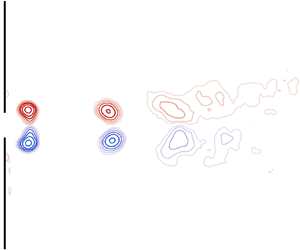

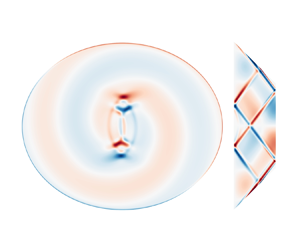



 for
for 























